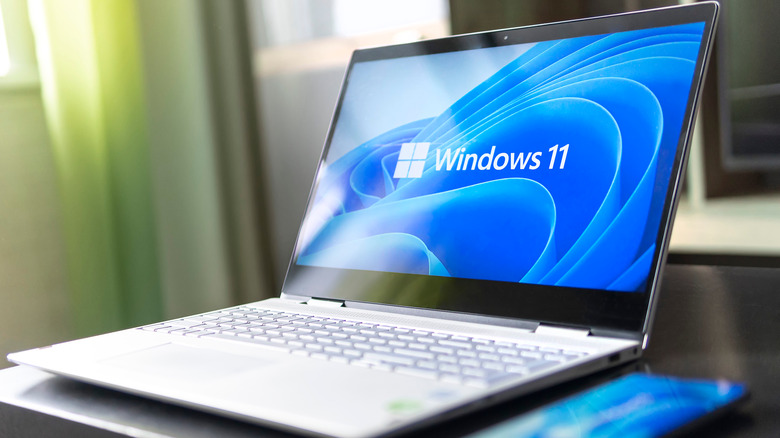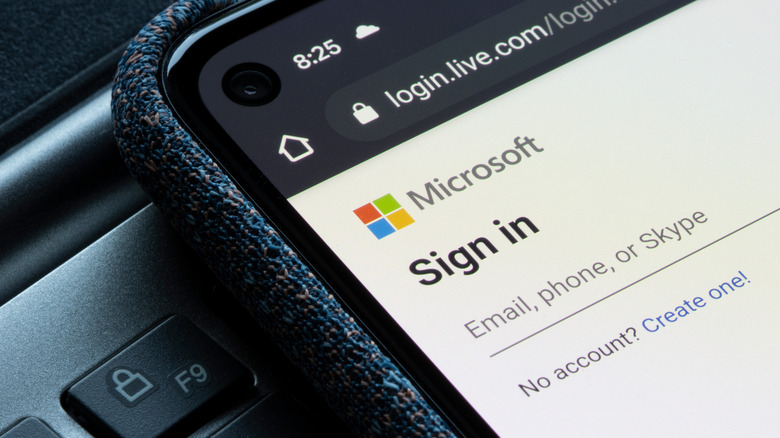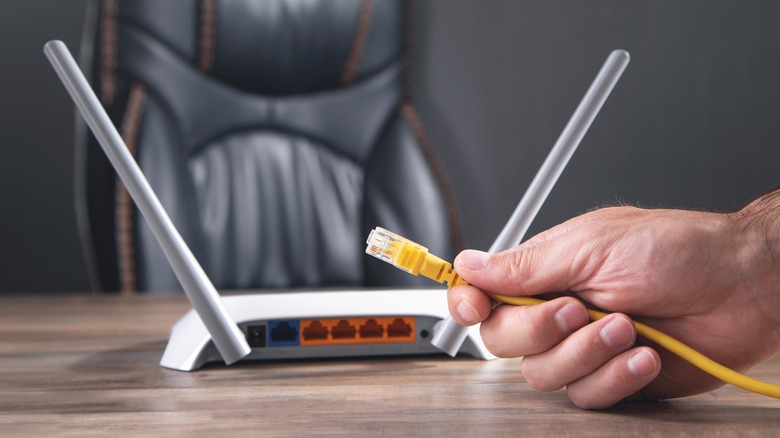How To Upgrade To Windows 11 Without A Microsoft Account
Windows 11 is the latest operating system from Microsoft. It was released in late 2021, and that release came with a hefty list of requirements. As a result, a significant number of PC owners found their devices weren't capable of running Windows 11. However, Microsoft did scale back the requirements a bit sometime after the release, and there was always the option of just forcing your ineligible PC to upgrade anyway — though this is something you have to do at your own risk.
One of the more annoying barriers users are encountering when trying to install the new operating system is Microsoft's insistence on users either already having or creating a Microsoft account. Some people just bite the bullet and sign up, but others may not want one for a number of reasons. This can include not wanting to provide Microsoft with personal information, feeling you have too many accounts with technology companies anyway, or just an aversion to being forced into creating an account instead of choosing to do so independently.
There are some benefits to tying a Microsoft account to your Windows installation: it makes transferring settings and preferences from your other computers easier, assuming you have also linked them to a Microsoft account, and integration with services like OneDrive and office programs including Word, Excel, and PowerPoint. There are also some security benefits, and you won't have to remember a unique password when signing into your PC. Microsoft hasn't included an obvious way to opt for a local account instead of an online one, unfortunately. While this could be an option in the future, there is no need to wait around. If you want to upgrade now without opening a new account, a few Reddit users have managed to discover some workarounds.
How to install Windows 11 without a Microsoft account
Reddit user Gamerminstrel noticed a key message that appears during the Windows 11 setup process, one that says you can, of course, only sign in to a Microsoft account if your PC is connected to the internet. The user explains that simply disconnecting the setup process from the internet will allow users to create a local account instead of being forced to create a Microsoft account.
A command prompt can be used to terminate the connection. The prompt window can be opened by holding down shift and f10 during the Windows 11 setup process. From there:
-
Type in ipconfig /release (note the space between ipconfig and the slash) and hit Enter
-
Close the Command Prompt box and click back in the setup process
-
The option to create a local account should now be available
-
Click Create a Local Account and proceed with the setup
The Command Prompt severs your computer's connection to the internet by essentially making it forget how to connect. Once the setup process is complete, you can restore your connection by opening the Command Prompt (shift + f10) again and typing "ipconfig /renew" before clicking enter — or by simply restarting the computer. Reddit user AppropriateEvent6446 also claims any of the following command prompt entries will allow you to bypass Windows 11's internet requirements: "oobebypassnro," "oobe /bypassnro," "oobe/bypassnro," and "cd oobe (press enter, then) –> bypassnro.cmd."
Other methods may be even easier
Other methods are available for users who can not get around things with the command prompt, such as people who have devices that come with "S Mode," or people who simply don't want to mess around with a command box and may just find one of these alternatives either easier or less intimidating. The second method discussed in the thread involves setting up an ethernet connection and then simply disconnecting it. To break that down, don't connect via Wi-Fi — instead, connect your computer to the router with an ethernet cable.
When you come to the part of the installation that asks you to create a Microsoft account, unplug the ethernet cable and then click the back button on the installer. The option to create a local account should now be there. Using a pre-existing fake account will also force the installer to offer users the option of creating a local account instead of attaching an actual Microsoft one. The pre-existing accounts listed in the thread are 1@1.com and test@test.com with the password for both accounts set as "test." A number of posters in the thread claimed using one of these fake accounts would immediately bring up the option of making a local account.


